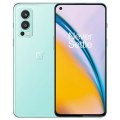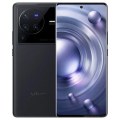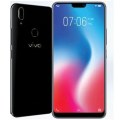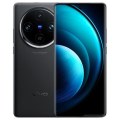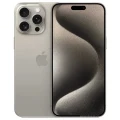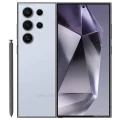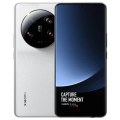- Awesome page
- Latest Mobile
- Smartphones
- OnePlus 7
OnePlus 7
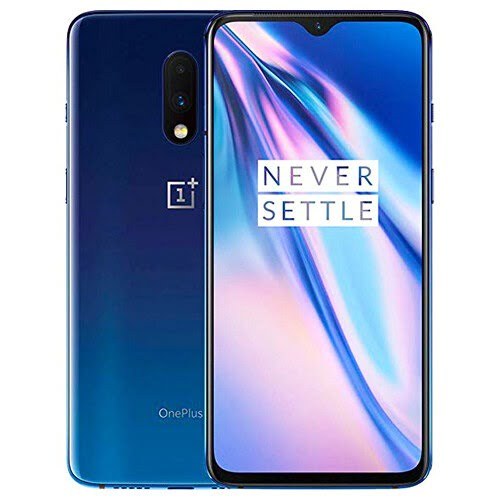

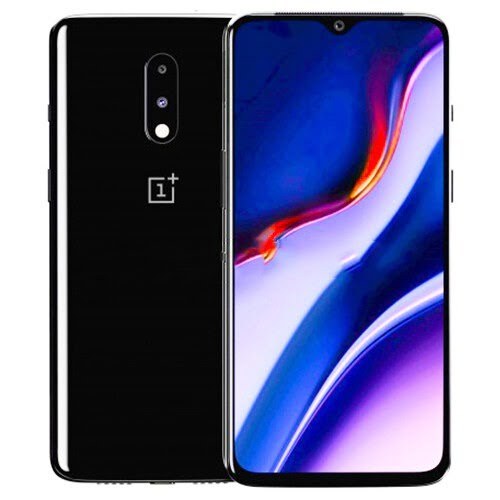
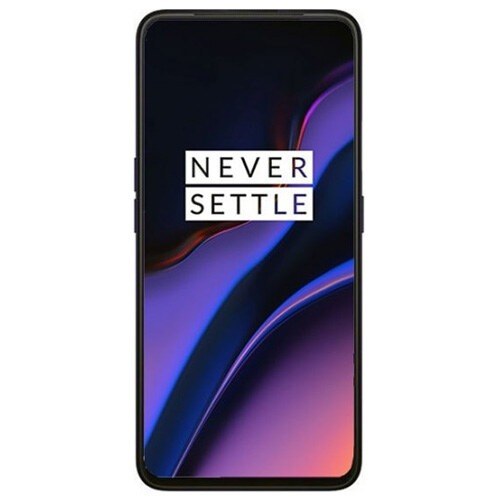

OnePlus 7 Price in Bangladesh
The OnePlus 7 is a mid-range smartphone priced around BDT 49000 in Bangladesh. It offers a high-quality display, a powerful processor, a capable camera system, and fast charging capabilities. It’s a popular choice among users who prioritize performance and value for money.
Specifications
General
| Model | OnePlus 7 |
| Announced | 22 May, 2024 |
| Released | 22 June, 2024 |
| Status | Available |
| Official price | 8GB 256GB ৳49,000 / 12GB 256GB ৳55,000 |
| Unofficial price | 8GB 256GB ৳32,000 / 12GB 256GB ৳44,000 |
Design
| Dimensions | 157.7 x 74.8 x 8.1 mm (6.21 x 2.94 x 0.32 in) |
| Weight | 182 g (6.42 oz) |
| Colors |
Mirror Gray, Red |
Network
| Technology | GSM / CDMA / HSPA / LTE |
| 2G Network |
GSM 850 / 900 / 1800 / 1900 - SIM 1 & SIM 2 CDMA 800 / 1900 & TD-SCDMA |
| 3G Network |
HSDPA 800 / 850 / 900 / 1700(AWS) / 1800 / 1900 / 2100 |
| 4G Network |
LTE (unspecified) |
| GPRS <strong>GPRS</strong> (General Packet Radio Service) is a packet oriented mobile data service on the 2G and 3G cellular communication system's global system for mobile communications (GSM), Generally, GPRS is used for the purpose of wireless data transfer, such as sharing pictures and videos or browsing the Internet via a mobile phone connection. | |
| EDGE <strong>EDGE</strong> (Enhanced Data GSM Environment) is a wireless network technology generally considered the next step in the 2G network offers data transfer rates up to four times faster than ordinary GSM networks, Generally, EDGE is used for the purpose of wireless data transfer, such as sharing pictures and videos or browsing the Internet via a mobile phone connection. | |
| Speed | HSPA 42.2/5.76 Mbps, LTE-A (7CA) Cat20 2000/150 Mbps |
Display
| Display Type <strong>Display Technology => </strong> A number of display technologies and types used in mobile phones => TFT (Thin Film Transistor), IPS (In-Place Switching), OLED (Organic Light Emitting Diode), AMOLED (Active-Matrix Organic Light-Emitting Diode), Super AMOLED (an even advanced version of AMOLED), Resistive Touchscreen (Resistive touchscreens contain two layer of conductive material with a very small gap between them which acts as a resistance), Capacitive Touchsceen (Capacitive touchscreen technology consists of a layer of glass coated with a transparent conductor) | Optic AMOLED capacitive touchscreen, 16M colors |
| Size | 6.41 inches, 100.9 cm2 (~85.5% screen-to-body ratio) |
| Resolution | 1080 x 2340 pixels, 19.5:9 ratio (~416 ppi density) |
| Features |
Corning Gorilla GlasDCI-P3 |
Camera
Main camera
| Camera Setup | Dual |
| Primary <strong>Camera</strong> is able to capture photographs and usually videos, The most important characteristics of a camera are the resolution (measured in megapixels), lens focus type (fixed or automatic), higher megapixel cameras are known to capture higher quality photos, but not always a good measurement of the photos quality. |
48 MP, f/1.7, (wide), 1/2&amp;quot;, 0.8µm, PDAF, OIS 5MP, f/2.4, 1.12µm, depth sensor |
| Features |
Dual-LED flash, HDR, panorama |
| Video | 2160p@30/60fps, 1080p@30/60/240fps, 720p@480fps, Auto HDR, gyro-EIS |
Selfie camera
| Camera Setup | Single |
| Primary <strong>Camera</strong> is able to capture photographs and usually videos, The most important characteristics of a camera are the resolution (measured in megapixels), lens focus type (fixed or automatic), higher megapixel cameras are known to capture higher quality photos, but not always a good measurement of the photos quality. |
16 MP, f/2.0, 25mm (wide), 1/3.1&amp;quot;, 1.0µm |
| Features |
Auto-HDR, gyro-EIS |
| Video | 1080p@30fps |
Hardware
| Chipset <strong>Chipset</strong> is a group of integrated circuits designed to perform one or a more dedicated functions, often with real time computing constraints, Popular smartphones are equipped with more advanced embedded chipsets that can do many different tasks depending on their programming. | Qualcomm SDM855 Snapdragon 855 (7 nm) |
| CPU <strong>CPU</strong> (Central Processing Unit) mostly known as processors, CPU processes instructions in order to carry out certain functions that make your device operate properly. Processors are often described as the brain of computers, smartphones and tablets, Smartphones and tablets rely on processors to carry out their every task, Processors are an incredibly important factor in selecting any type of computing device, including your smartphone. | Octa-core (1x2.84 GHz Kryo 485 & 3x2.42 GHz Kryo 485 & 4x1.80 GHz Kryo 485) |
| GPU <strong>GPU</strong> (Graphics Processing Unit) is a single-chip processor designed to rapidly manipulate and alter memory to accelerate the creation of images in a frame buffer intended for output to a display, This includes things such as lighting effects, object transformations, and 3D motion. | Adreno 640 |
| RAM (Memory) <strong>RAM</strong> (Random Access Memory) is a type of computer memory that can be accessed randomly, any byte of memory can be accessed without touching the preceding bytes that allows information to be stored and accessed quickly from random locations. RAM is the most common type of memory found in computer systems, smartphones, tablets and other electronic devices. | 6/8 GB |
| Internal Storage <strong>Internal Storage</strong> is a data storage space (flash memory) mostly used in smartphones, tablets and other electronic devices where operating system, apps, music, photos, videos, files and other user data Is stored. | 128/256 GB |
| Sensors <strong>Sensors</strong> are electronic components that detects and responds to some type of input from the physical environment. The specific input could be light, heat, motion, moisture, pressure and location, The output is generally a signal that is converted to use in computing systems, a location sensor, such as a GPS receiver is able to detect current location of your electronic device. |
Fingerprint- (under display), accelerometer, gyro, proximity, compass |
Connectivity
| Bluetooth <strong>Bluetooth</strong> is a wireless communications technology for exchanging data between mobile phones, headsets, computers and other network devices over short distances without wires, Bluetooth technology was primarily designed to support simple wireless networking of personal consumer devices. | 5.0, A2DP, aptX HD, LE |
| Infrared <strong>Infrared</strong> connectivity is an old wireless technology used to connect two electronic devices. It uses a beam of infrared light to transmit information and so requires direct line of sight and operates only at close range. | |
| USB | 2.0, Type-C 1.0 reversible connector, USB On-The-Go |
| GPS <strong>GPS</strong> The Global Positioning System is a satellite-based radio navigation system, GPS permits users to determine their position, velocity and the time 24 hours a day, in all weather, anywhere in the world, In order to locate your position, your device or GPS receiver must have a clear view of the sky. | Yes, with A-GPS, GLONASS, BDS, GALILEO |
| NFC <strong>NFC</strong> (Near field communication) is a set of standards for smartphones and similar devices to establish peer-to-peer radio communications with each other by touching them together or bringing them into proximity, usually no more than a few inches. |
Battery
| Battery Type <strong>Battery Type => </strong> Cell phones run on various kinds of batteries depending on the manufacturer, phone size or shape and features. There are basically four types of cell phone batteries => Lithium Polymer, Lithium Ion, Nickel Metal Hydride and Nickel Cadmium. | Non-Removable Li-Po |
| Capacity <strong>Battery Capacity</strong> is a measure (typically in Amp-hr) of the charge stored by the battery, and is determined by the mass of active material contained in the battery. The battery capacity represents the maximum amount of energy that can be extracted from the battery under certain conditions. | 3700 mAh battery |
| Charging Charging | Fast battery charging 30W |
A Game-Changer in the Mid-Range Smartphone Market OnePlus 7
In a world where smartphones are more than just communication tools, the OnePlus 7 enters the fray with a promise of performance, affordability, and style. Launched as a contender in the mid-range smartphone segment, this device has quickly piqued the interest of tech enthusiasts and gadget lovers alike. The OnePlus brand, known for its “Never Settle” mantra, continues to challenge the status quo by providing high-end features without the prohibitive price tag.
The OnePlus 7 is positioned strategically in the smartphone market, catering to users who seek flagship performance without the flagship price. This device aims to bridge the gap between premium and budget phones, offering a compelling package that appeals to a wide range of consumers. Whether you’re a tech-savvy individual or someone looking for a reliable everyday device, the OnePlus 7 promises to meet your needs.
In this blog post, we’ll take an in-depth look at the OnePlus 7, exploring its design, performance, and features. We’ll also compare it to other popular smartphones in the same price range, provide user feedback, and discuss what the future holds for OnePlus. By the end, you’ll have a clear understanding of whether the OnePlus 7 is the right choice for you.
Design and Build Quality
The OnePlus 7 boasts a sleek and modern design that aligns with contemporary smartphone aesthetics. With its glass back and aluminum frame, the device feels premium in hand and exudes an air of sophistication. The minimalist design approach, characterized by clean lines and subtle curves, ensures the phone is not only attractive but also comfortable to hold.
One of the standout features of the OnePlus 7’s design is its immersive display. The 6.41-inch AMOLED screen with a resolution of 1080 x 2340 pixels provides vibrant colors and deep blacks, making it ideal for media consumption. The absence of bezels and the presence of a small teardrop notch contribute to a screen-to-body ratio that maximizes the viewing experience.
The ergonomic placement of buttons and ports on the OnePlus 7 enhances usability. The alert slider, a signature feature of OnePlus devices, allows users to easily switch between sound profiles without unlocking the phone. Overall, the design of the OnePlus 7 combines aesthetics with practicality, making it a desirable choice for those who appreciate both form and function.
Display Brilliance
When it comes to the display, the OnePlus 7 does not disappoint. Featuring a 6.41-inch AMOLED panel, the screen delivers stunning visuals that captivate the eye. With a resolution of 1080 x 2340 pixels, it offers sharpness and clarity that bring images and videos to life. The AMOLED technology ensures vibrant colors, deep contrasts, and excellent viewing angles.
The display’s color accuracy and brightness make it suitable for various tasks, from browsing the web to watching movies. Whether indoors or outdoors, the screen remains legible, thanks to its impressive brightness levels. The inclusion of features like Night Mode and Reading Mode allows users to customize their viewing experience further.
One of the most noteworthy aspects of the OnePlus 7’s display is its fluidity. The 90Hz refresh rate, a feature borrowed from its more expensive sibling, the OnePlus 7 Pro, enhances the smoothness of animations and interactions. This high refresh rate contributes to a more responsive and enjoyable user experience, setting the OnePlus 7 apart from many of its competitors in the same price range.
Performance Powerhouse
Under the hood, the OnePlus 7 is powered by the Qualcomm Snapdragon 855 processor, a chipset synonymous with flagship-level performance. Paired with up to 8GB of RAM, this device handles multitasking and demanding applications with ease. Whether you’re gaming, streaming, or running productivity apps, the OnePlus 7 delivers a seamless and lag-free experience.
The Adreno 640 GPU further enhances the device’s gaming capabilities, ensuring graphics-intensive games run smoothly. The gaming mode optimizes the phone’s resources, minimizing distractions and maximizing performance during gameplay. For tech enthusiasts who enjoy mobile gaming, the OnePlus 7 offers a compelling option.
Storage options include 128GB and 256GB variants, providing ample space for apps, media, and files. The UFS 3.0 storage technology enhances data transfer speeds, resulting in faster app launches and smoother performance. Overall, the OnePlus 7’s performance prowess makes it a reliable companion for users seeking speed and efficiency.
Camera Capabilities
The OnePlus 7 features a dual-camera setup on the rear, comprising a 48MP primary sensor and a 5MP depth sensor. This combination allows the device to capture detailed and vibrant images in various lighting conditions. The primary sensor benefits from optical image stabilization (OIS), ensuring sharp and stable shots even in low-light scenarios.
The camera app offers a range of shooting modes, including Nightscape, Portrait, and Pro mode, providing versatility for photography enthusiasts. The Nightscape mode enhances low-light photography, capturing more light and detail for impressive night shots. The Portrait mode, on the other hand, produces pleasing bokeh effects, blurring the background to highlight the subject.
On the front, the OnePlus 7 sports a 16MP selfie camera housed within the teardrop notch. The front camera’s quality is commendable, producing clear and vibrant selfies suitable for social media sharing. With these camera capabilities, the OnePlus 7 caters to photography enthusiasts looking to capture moments with precision and creativity.
Battery Life and Charging
A key consideration for smartphone users is battery life, and the OnePlus 7 aims to deliver. Equipped with a 3,700mAh battery, the device offers a full day of usage for most users. The efficient power management of the Snapdragon 855, combined with the optimizations in OxygenOS, contributes to prolonged battery life.
For users who find themselves needing a quick recharge, the OnePlus 7 supports Warp Charge 30, the brand’s proprietary fast charging technology. With Warp Charge, the device can replenish a significant amount of battery capacity in a short period, ensuring users spend less time tethered to a charger.
The combination of long-lasting battery life and fast charging capabilities makes the OnePlus 7 a reliable choice for users on the go. Whether you’re a heavy user or someone who needs their phone to last throughout the day, the OnePlus 7 delivers on its promise of endurance and convenience.
Unique Features and Software
The OnePlus 7 runs on OxygenOS, a custom Android skin known for its clean interface and user-friendly features. OxygenOS offers a near-stock Android experience with thoughtful enhancements that enhance usability. Features like Zen Mode encourage users to disconnect from their devices and focus on the present moment.
Customization options abound in OxygenOS, allowing users to tailor their device to suit their preferences. From theme options to gesture navigation, OxygenOS provides a level of flexibility that appeals to tech enthusiasts who enjoy personalizing their devices. Regular software updates ensure that users receive new features and security patches promptly.
One of the standout features of the OnePlus 7 is its in-display fingerprint sensor. This technology enables convenient and secure unlocking of the device with a simple touch on the screen. The sensor’s speed and accuracy make it one of the best implementations in the industry, further enhancing the overall user experience.
Comparing with Competitors
In the competitive mid-range smartphone market, the OnePlus 7 faces off against rivals like the Samsung Galaxy A70, Xiaomi Mi 9, and Google Pixel 3a. Each of these devices has its strengths, but the OnePlus 7 manages to carve out a niche with its unique combination of features and price point.
When compared to the Samsung Galaxy A70, the OnePlus 7 stands out with its superior performance and faster charging capabilities. The Xiaomi Mi 9, known for its value proposition, offers similar performance but lacks the polish and software experience of the OnePlus 7. Meanwhile, the Google Pixel 3a excels in camera performance but falls short in processing power.
Ultimately, the OnePlus 7’s ability to deliver flagship-level performance, a premium design, and thoughtful software enhancements give it an edge in the mid-range segment. For users seeking a balanced smartphone experience without compromising on key features, the OnePlus 7 emerges as a compelling choice.
User Experience and Feedback
Feedback from early adopters and tech experts alike highlights the OnePlus 7’s strengths and areas for improvement. Users appreciate the device’s smooth performance, vibrant display, and fast charging capabilities. The in-display fingerprint sensor receives praise for its speed and reliability.
However, some users note that the absence of features like wireless charging and water resistance is a drawback, especially when compared to flagship devices. Additionally, while the camera performance is commendable, it may not match the level of dedicated camera-focused smartphones.
Overall, the user experience with the OnePlus 7 is overwhelmingly positive, with many users expressing satisfaction with their purchase. The device’s ability to deliver a flagship-like experience at a competitive price point resonates with tech enthusiasts who value performance and design.
Maximizing Your OnePlus 7
To make the most of your OnePlus 7, consider customizing the device to suit your preferences. Explore OxygenOS’s customization options, such as theme settings, gesture controls, and app shortcuts. Take advantage of features like Night Mode and Reading Mode for a comfortable viewing experience.
For photography enthusiasts, experimenting with different camera modes and settings can yield impressive results. Whether you’re capturing landscapes, portraits, or low-light scenes, the OnePlus 7’s camera capabilities provide ample opportunities for creativity.
Additionally, stay updated with software updates and new features introduced by OnePlus. Regularly checking for updates ensures that your device remains secure and optimized for performance. By following these tips, you can maximize the potential of your OnePlus 7 and enjoy a seamless smartphone experience.
Future Updates and Brand Roadmap
OnePlus is known for its commitment to software updates and customer feedback. The company has a track record of listening to its user base and implementing improvements based on their needs. Future updates for the OnePlus 7 are likely to bring new features and optimizations that enhance the overall user experience.
Looking ahead, OnePlus aims to continue pushing the boundaries of smartphone technology. The brand’s commitment to innovation and performance-driven design suggests exciting developments on the horizon. Whether it’s advancements in camera technology, display technology, or software enhancements, OnePlus users can expect a steady stream of improvements.
For users invested in the OnePlus ecosystem, the brand’s roadmap offers reassurance that their devices will remain relevant and competitive in the ever-evolving smartphone market. The OnePlus 7, as part of this ecosystem, is poised to benefit from these future developments.
Conclusion
In conclusion, the OnePlus 7 is a standout option in the mid-range smartphone market, offering a compelling blend of performance, design, and features. For tech enthusiasts and gadget lovers seeking a device that delivers flagship-level performance without breaking the bank, the OnePlus 7 proves to be a worthy contender.
With its vibrant display, powerful processor, and thoughtful software enhancements, the OnePlus 7 caters to the needs of modern smartphone users. While it may lack some premium features found in higher-end models, its value proposition and user experience make it a compelling choice for a wide range of consumers.
If you’re considering upgrading your smartphone, the OnePlus 7 deserves a place on your shortlist. Explore its features, read user feedback, and visit the official website for more information. Join the community of OnePlus users who appreciate the brand’s commitment to excellence and innovation in the world of smartphones.

